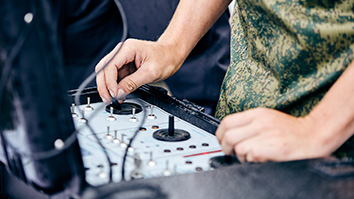Citation
Vinkhuyzen, E.; Li, I.; Plurkowski, L. The organization of repair in game play. Tenth Conference of the International Institute for Ethnomethodology and Conversation Analysis (IIEMCA); 2011 July 10-14; Fribourg, Switzerland.
Abstract
There are similarities between talk-in-interaction and the Memory game as social activities. Both are participant monitored and managed and have a self-righting mechanism: repair. However, the “rules” for Memory are quite different from talk-in-interaction and turns in the game are largely implemented through non-verbal actions with only occasional talk. Memory’s explicit rules and the trajectory of the non-verbal actions used to implement the turns provide the participants with different resources to mobilize for repair. In the 540 instances of repair we collected, the most common two repairs addressed troubles due to (1) not seeing the card the opponent turned over or (2) going out of turn. The not-seen-the-card repair was initiated most commonly through non-verbal action: the player would reach out and turn the card back over to take another look. Invariably, players executed this repair shortly after the other player had turned the card back over and before that player had completed the “return phase” of the turn. Characteristically, the repair action was performed at increased speed and the turning over of the card was done to enable their own viewing; oftentimes players cocked their head to look at an only partially turned over card. Collectively, the timing and performance of the repair was designed to indicate that the player was repairing the prior turn, and not taking a new turn. The going-out-of-turn repair was aimed at preventing the other player from going out of turn, usually after a player collected a pair and was therefore eligible for a bonus turn. Typically, the offender would be quickly interrupted by the other. In talk-in-interaction such an action might be construed as an ‘other repair’ and therefore be ‘dispreferred’, yet in Memory it was a common occurrence. As turns in Memory are executed non-verbally, the repair could be initiated in the other players preparatory phase and thus the focal action could be prevented. In short, we found that the projectability of non-verbal actions is a resource for repair; actions can be prevented by intercepting them in the preparatory phase or can be initiated before the end of the return phase to convey that a player is doing repair and not taking a regular turn, which has a bearing on whose turn is being repaired and therefore who’s turn is next.


